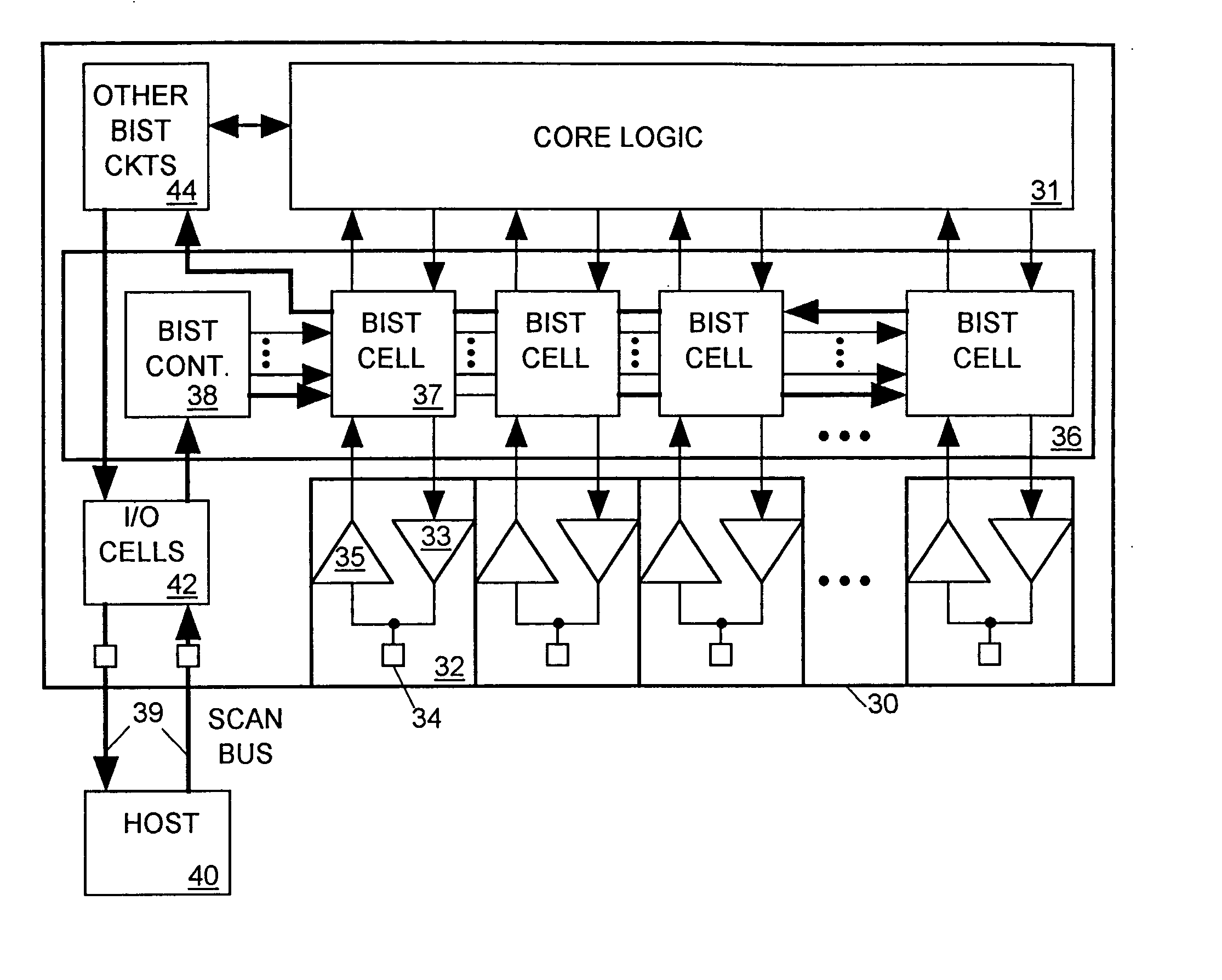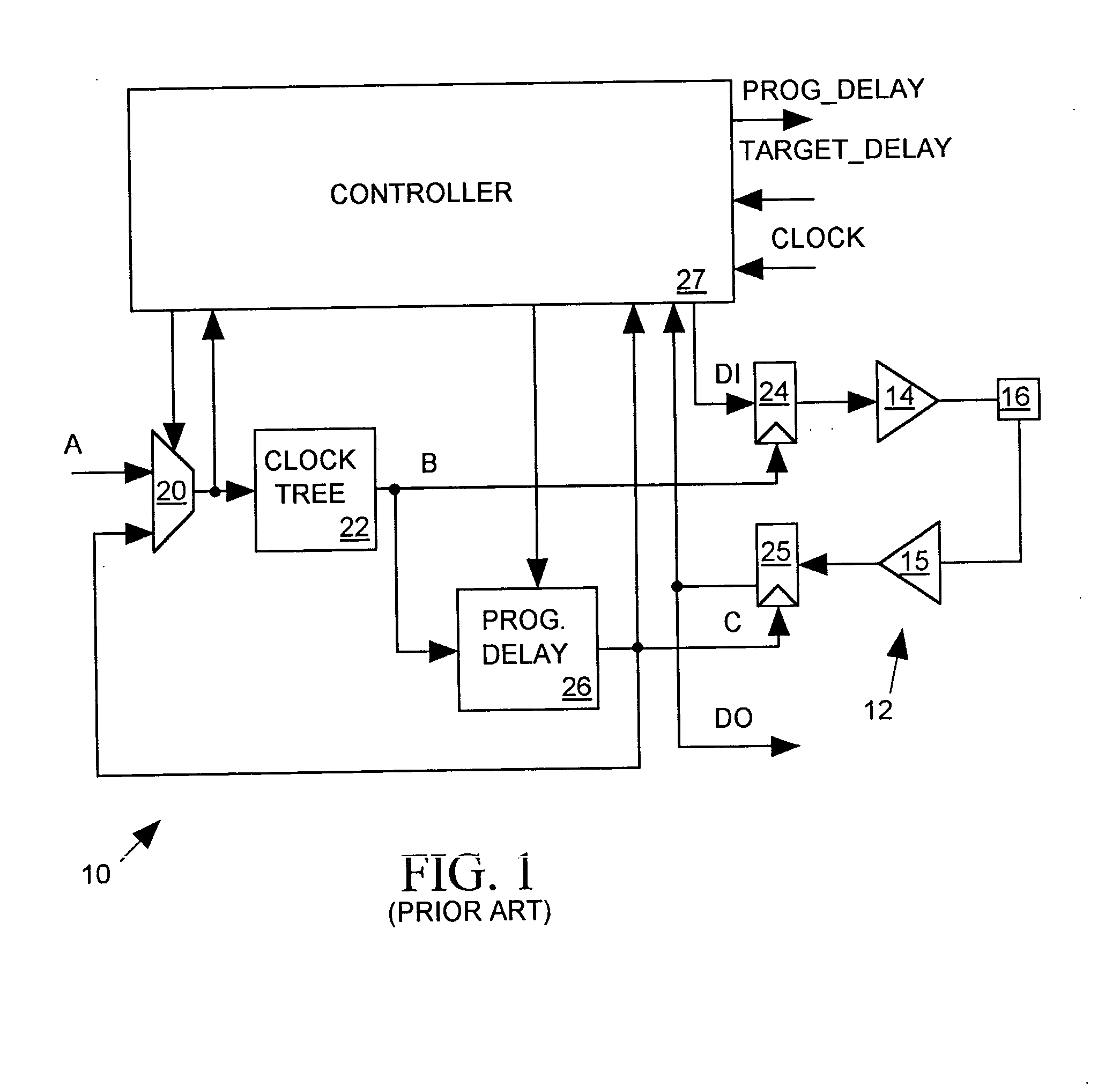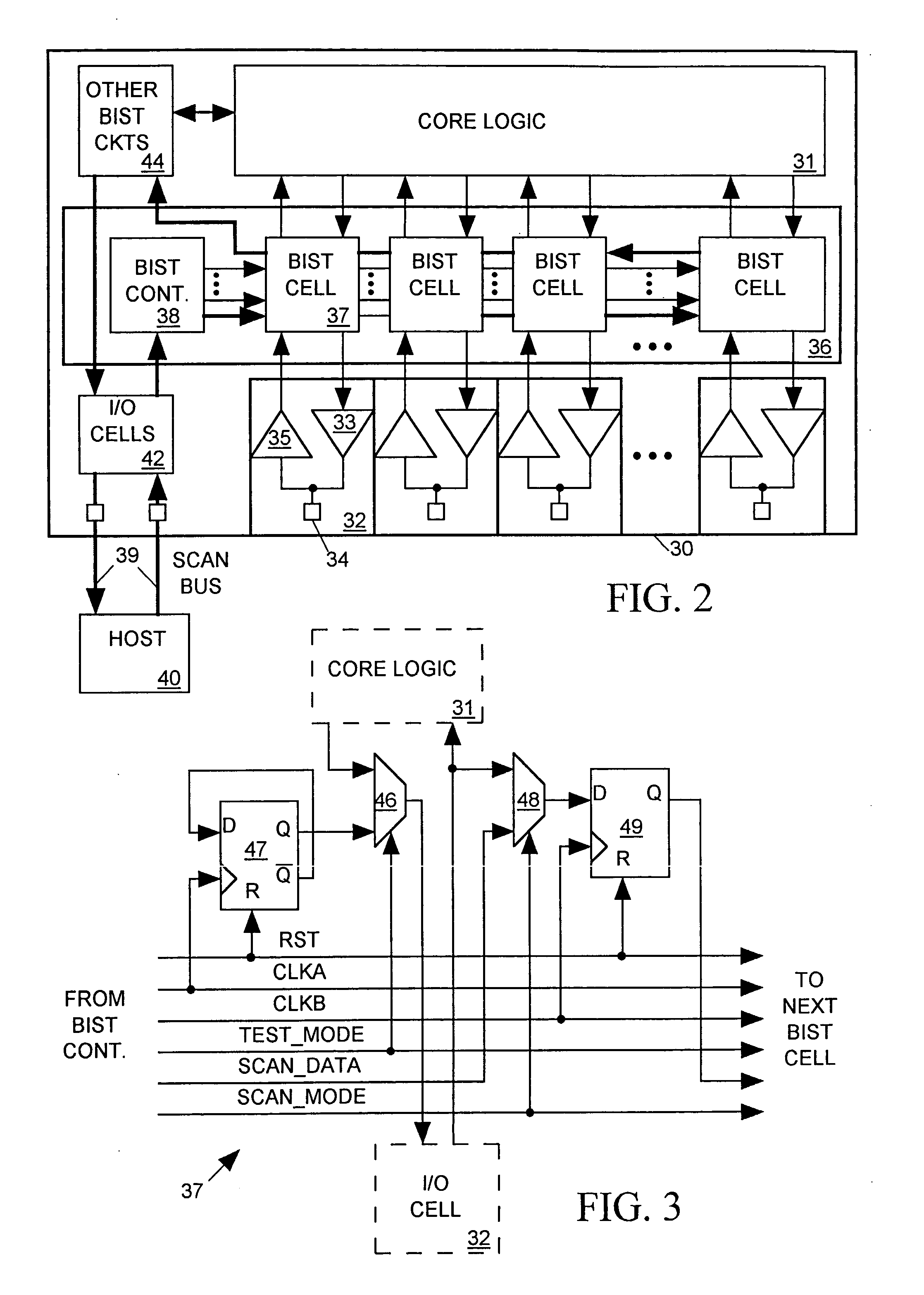Self-calibrating strobe signal generator
a strobe signal and generator technology, applied in the field of self-calibrating strobe signal generators, can solve the problems of consuming substantial floor space within an ic, employing relatively complex logic, and external test equipment capable of testing path delays
- Summary
- Abstract
- Description
- Claims
- Application Information
AI Technical Summary
Benefits of technology
Problems solved by technology
Method used
Image
Examples
Embodiment Construction
The present invention relates to self-calibrating strobe signal generator. The specification below describes an exemplary strobe signal generator in accordance with the invention in the context of an application within a built-in self-test (BIST) circuit for measuring path delays within an integrated circuit (IC). However, those of skill in the art will appreciate that a self-calibrating strobe signal generator in accordance with the invention can be employed in other applications.
FIG. 2 depicts an IC 30 including core logic 31 for communicating with external circuits through a set of I / O cells 32. Each I / O cell 32 includes a driver 33 for forwarding a signal from core logic 31 outward to the external circuits via a pad 34 on the surface of the IC, and a receiver 35 for forwarding an incoming signal arriving on pad 34 to core logic 31. While an IC designer might like to place timing constraints on driver 33 and receiver 35 specifying path delays through them are to be within some ...
PUM
 Login to View More
Login to View More Abstract
Description
Claims
Application Information
 Login to View More
Login to View More - R&D
- Intellectual Property
- Life Sciences
- Materials
- Tech Scout
- Unparalleled Data Quality
- Higher Quality Content
- 60% Fewer Hallucinations
Browse by: Latest US Patents, China's latest patents, Technical Efficacy Thesaurus, Application Domain, Technology Topic, Popular Technical Reports.
© 2025 PatSnap. All rights reserved.Legal|Privacy policy|Modern Slavery Act Transparency Statement|Sitemap|About US| Contact US: help@patsnap.com



